Category: Direct Service
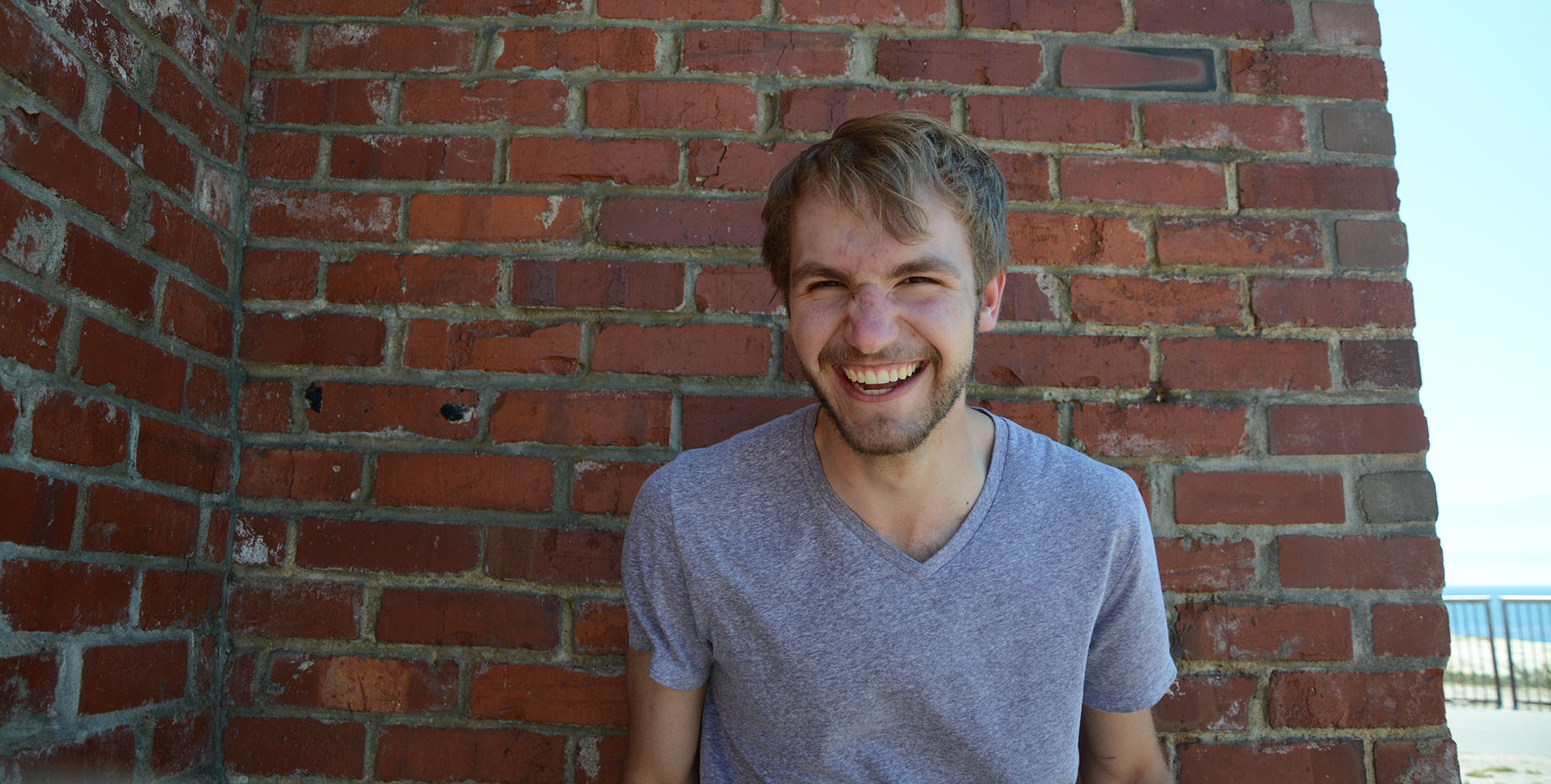
My Most Important Lesson
By Thomas Allen Wehner, ’20, MS ’21
When I first started as a tutor with the High School Support Initiative (HSSI) freshman year, I didn’t realize the depth of the program and how much it would mean to me. I signed up after getting an email about the program because I liked tutoring and it sounded like a good cause. I joined HSSI as a tutor going out to my school site once a week. I was barely aware of the complexities of the program, the intricacies of ethical service, and the depth of how my identities interacted with the complex histories and systems at play in the education system. I had a lot to learn.
At the end of freshman year, I became an HSSI fellow and spent the next three years working with and learning from the incredible team. As a fellow, I was part of the program staff, with expanded responsibilities to support the tutors and program. As a team, we worked with Stanford students, analyzed feedback, hosted workshops, discussed articles and program changes, filled in spreadsheets, tracked attendance, and went out every week to maintain our anchor in the most important work by tutoring high school students.
This experience sparked my interest in education, organizational behavior, and nonprofit work. I had joined HSSI because of its focus on working with high school youth, but working as an HSSI fellow helped me discover that I was even more interested in learning how to develop the organization and volunteers to better serve and collaborate with youth and community partners. This insight helped guide my future plans, highlighted what talents I have to use in collaboration with others to build a better world, and revealed what skills I still need to develop.
Every experience with HSSI pushed me forward as a person – whether building facilitation skills with volunteers, learning the power and shortcomings of the Principles of Ethical and Effective Service, or better understanding how to be an ally as a person of privilege in the fight for educational equity.
The time I spent with the HSSI team added so many dimensions to my Stanford experience, and I consider it to be the most important part of my education here. Beyond fostering a set of technical skills, this experience helped me learn about myself and understand my journey to being a better friend, ally, coworker, volunteer, leader, and person. I am forever grateful to Sophia Kim, our wonderful program director and mentor, and the rest of the HSSI family for this incredible experience.

Originally from Highland Park, IL, Thomas Allen Wehner, ’20, MS ’21, studies electrical engineering at Stanford. In addition to serving with the High School Support Initiative (HSSI) for all four years of his undergraduate career, he has been involved in the campus theater scene, most recently as the executive producer of Ram’s Head.
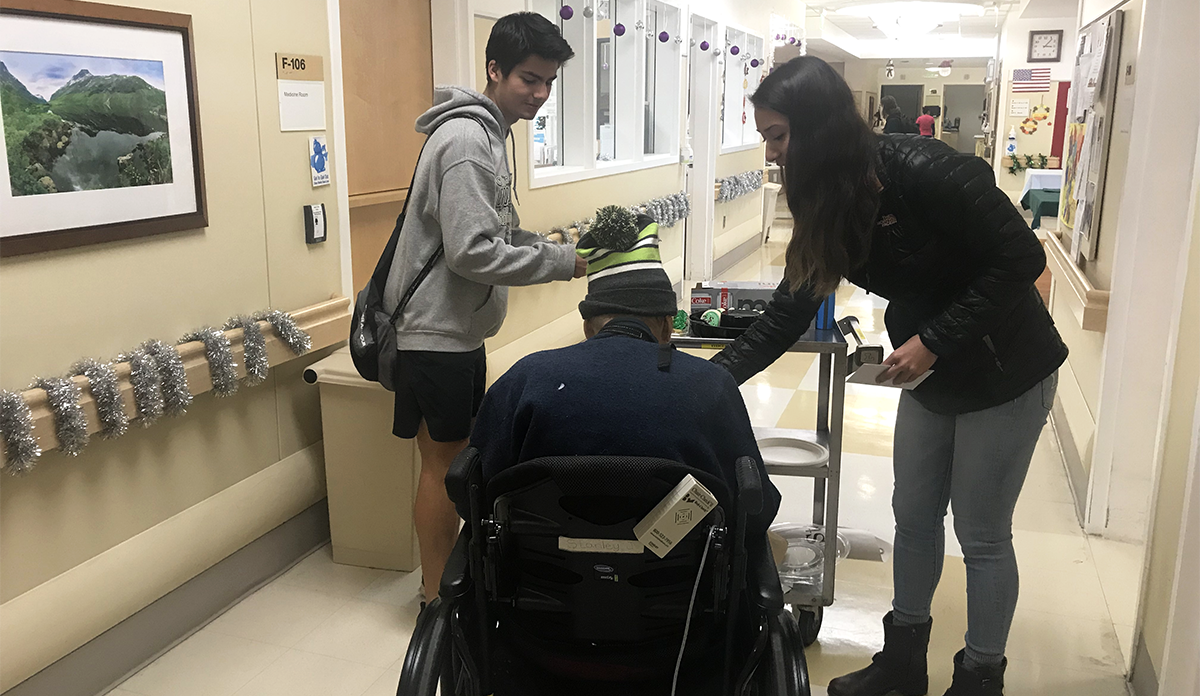
Serving Those Who Have Served: 25 Years of United Students for Veterans’ Health
By Erika DePalatis, ’19
It all began in 1994.
While volunteering in the Alzheimer’s Ward of the Palo Alto Veterans Affairs Administration Hospital, Vance Vanier, a Stanford undergraduate studying economics and political science, noticed that many of the patients were suffering from loneliness.
With little connection to the outside world, many of these veterans rarely had the opportunity to interact with others, outside occasional family visits and planned events. Worse still, patients in this long-term care ward often experienced cognitive impairments such as Alzheimer’s disease or other forms of dementia, which can make patients feel confused or distressed when isolated.
These veterans had served their community; Vanier wanted to help organize their community to serve them. Rallying forty other volunteers, Vanier founded United Students for Veterans’ Health (USVH) with the goal of building caring, meaningful relationships between students and long-term care patients in Veterans Affairs (VA) Hospitals. Vanier’s brother, Andre, launched USVH’s national expansion the following quarter and thereafter expanded his role as the chair of USVH’s National Advisory Board.
Over the years, USVH has expanded across the United States, becoming one of the first nationwide student organizations connecting students with hospitalized veterans. Chapters at the University of Southern California and University of Alabama were founded several years ago, and the group’s sustained growth still continues: earlier this year, a new USVH chapter was established at the University of San Francisco, supported by the diligent efforts of USVH’s national co-presidents, Stanford students Komal Kumar, ’20, and Zane Norville, ’21.
“Our chapter in San Francisco has been a long time coming. The veteran population at the SFVA hospital is conveniently located near two undergraduate universities, San Francisco State University and the University of San Francisco. …[W]e are proud to say the program is launching now, with a group of six dedicated pilot student volunteers,” explains Kumar.
The original Stanford chapter of USVH, however, has never forgotten the local need which first started this national organization. Each fall, USVH recruits new volunteers to serve veterans at the Menlo Park Veterans Affairs Hospital (MPVA). Student volunteers visit the hospital’s long term care facility, where many of the veterans have been living for several years, and, through weekly visits, build meaningful friendships. The group’s connection with the local veteran community has only grown during its many years of operation, as evidenced by the group hosting an increasing number of events at the hospital each quarter, including an event this past fall that attracted the highest veteran turnout in USVH’s history, with over 25 veterans in attendance.
“The hospital can be a dismal and lonely place for some of the veterans,” explains USVH alumni John Rodgers, ’19. “Although it could feel like a small thing to visit the VA once a week, listening to someone’s story and really trying to get to know them can go a long way toward improving their time in the hospital.”
In addition to the relationships built between USVH participants and veterans, USVH plays an important role on campus by hosting educational events that inform the campus community about issues affecting veterans. For example, USVH partnered with the Stanford United Veterans Association (SUVA) in October 2019 to host two SUVA representatives and a VA psychiatrist for a panel discussion on veterans’ portrayal in the media.
This year, USVH celebrates its 25th year of partnership with the Haas Center for Public Service, during which time USVH volunteers have reported serving over 50,000 hours at the MPVA. In partnership with the Haas Center, USVH honors students who sustain their involvement with the group for at least three quarters by offering them a Cardinal Commitment certification. Since the launch of the Cardinal Commitment program just two years ago, 16 USVH students have received this certificate.
The thought of over-scheduled Stanford students consistently making time each week to visit elderly veterans might strike some as surprising; but Kelly Beck-Sordi, Haas Center Associate Director and Director of Cardinal Commitment, would explain that, instead, the dedication of USVH student volunteers is just one example of the growing culture of service on campus.
“Every year, hundreds of Stanford students make year-long commitments to serve with student groups, community organizations, and campus programs, from teaching local youth how to code to advocating for workers’ rights,” Beck-Sordi explains. “USVH has been very successful in engaging students over the years, and that’s because students care about serving those who have served our country. Students want to give back.”

Erika DePalatis, ’19, serves as the Communications Coordinator at the Haas Center for Public Service. Prior to her work at Haas, Erika studied English and Italian at Stanford and worked as an oral communications tutor at the Hume Center for Writing and Speaking. Her role allows her to elevate student stories of service and connect Stanford students with service opportunities.
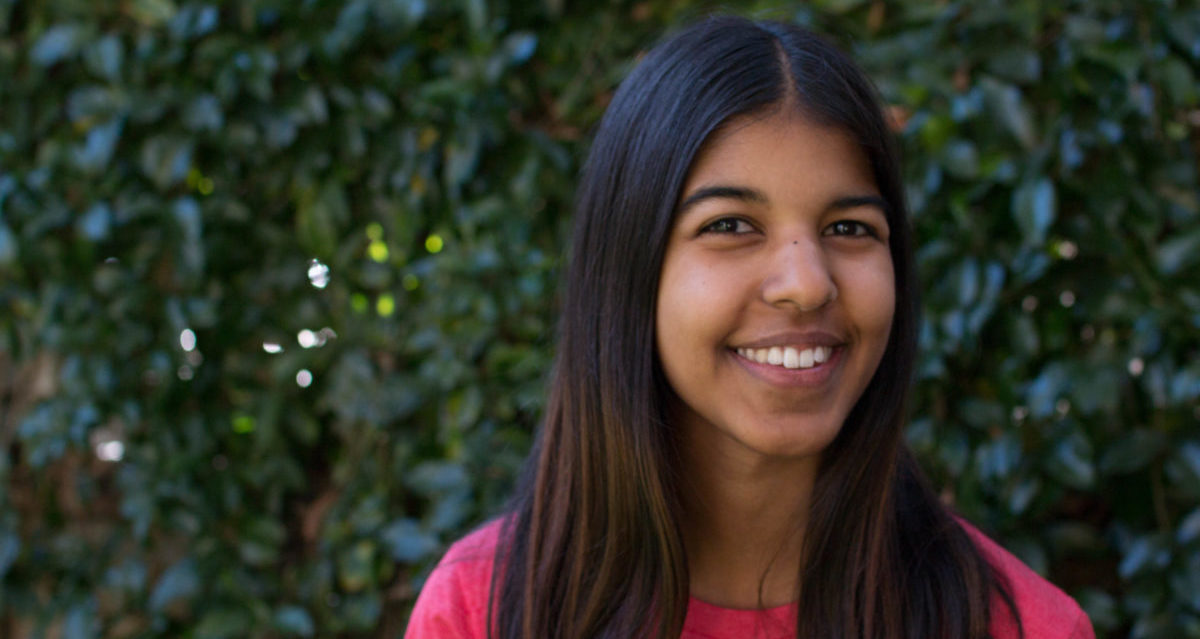
Hidden in Plain Sight: Deconstructing the Mental Health Stigma
By Anika Sinha, ’21
Content Warning: This post contains information related to self harm and mental illness that can be difficult to review. Please make use of campus resources such as Vaden Health Center’s Counseling & Psychological Services and The Bridge Peer Counseling Center to support your safety and well-being.
“I cut myself pretty often. I want to stop but I can’t. How do you stop?” My teaching partner and I stared at this card for longer than usual, then glanced at each other, unsure of how to proceed.
I am a classroom teacher for Health Education for Life, Partnerships for Kids (HELP4Kids). Every Friday, I teach health education to sixth graders at a local middle school. Topics include mental health and wellness, exercise, nutrition, drugs and alcohol, and sleep. Most of my days in the classroom are full of giggles and interrogations about the college experience. Questions can range from: “What classes are you taking?” to “How often do people get drunk?” HELP4Kids lets me escape the Stanford bubble for a brief hour and immerse myself in the colorful world of a middle school classroom. Regardless of my mood on campus, I trust the kids to bring a smile to my face… but this is not always the reality.
At the end of every class, we hand out notecards to the students, so they can ask anonymously any questions they may be uncomfortable to ask in front of the class. The topics we discuss can be quite sensitive and personal, so we want to give space for deeper discussions. Some of the notecards are random sketches pulled out of wild 11-year-old imaginations, some are simple “thank you’s,” and some even contain memes. However, the majority include thoughtful comments or questions about the day’s lesson.
The day we taught a lesson about mental health, I knew we would receive some sensitive questions. But I was still stunned and unprepared to find out that one of my students was struggling so deeply. This indicated my own naiveté. How could someone so young be afflicted to the point of hurting themselves? I thought. After reflecting for a while, I realized that this very mindset was part of the problem. Instead of marveling at how problems like this could even exist, I needed to consider the underlying systemic issues perpetuating my surprise. This child had obviously been hiding this issue. Without the notecards we passed out, they would not have had a platform to speak up. Their reluctance to ask for help ultimately boils down to the stigma attached to mental health issues, a problem that ravages our society.
After reading the notecard, my co-teacher and I reached out to the classroom teacher and school nurse immediately to address the situation. They informed us that they knew the student who wrote the note, and would follow up imminently to ensure they received proper care.
Experiences like this one have shown me that reducing stigma around mental illness is of paramount importance, especially when it comes to adolescents. More notecards from the students in HELP4Kids revealed similar themes, and those were just from the ones who were brave enough to speak up.
I know I am just barely scratching the surface of this issue, but I am doing what I can to reduce this stigma on campus. As a residential assistant and co-president of Stanford Mental Health Outreach, I have been committed to normalizing conversations about mental illness through speaker panels, mental health short films, and fostering vulnerability with my residents. The more these conversations occur, the more students will be able to admit to themselves and to others that they are struggling. This is the first step toward healthily managing life with a mental illness.
My experiences are teaching me that mental illness is relentless: nobody—no matter their age, gender, career, income, education—is given a free pass. If someone seems too young or too accomplished to be battling with it internally, I need to think again. To combat stigma, we need to foster platforms where people can speak openly about their struggles, without fear of judgement… and, most importantly, with the promise of support.

Anika Sinha, ’21, is majoring in human biology with a minor in psychology. In addition to working with youth through HELP4Kids and Peer Health Exchange, Anika is involved in Student Clinical Opportunities for Premedical Experience (SCOPE) and Stanford Mental Health Outreach (SMHO). You can find Anika at Branner Hall as a resident assistant, or at the Haas Center for Public Service, where she serves as a Cardinal Service Peer Advisor.
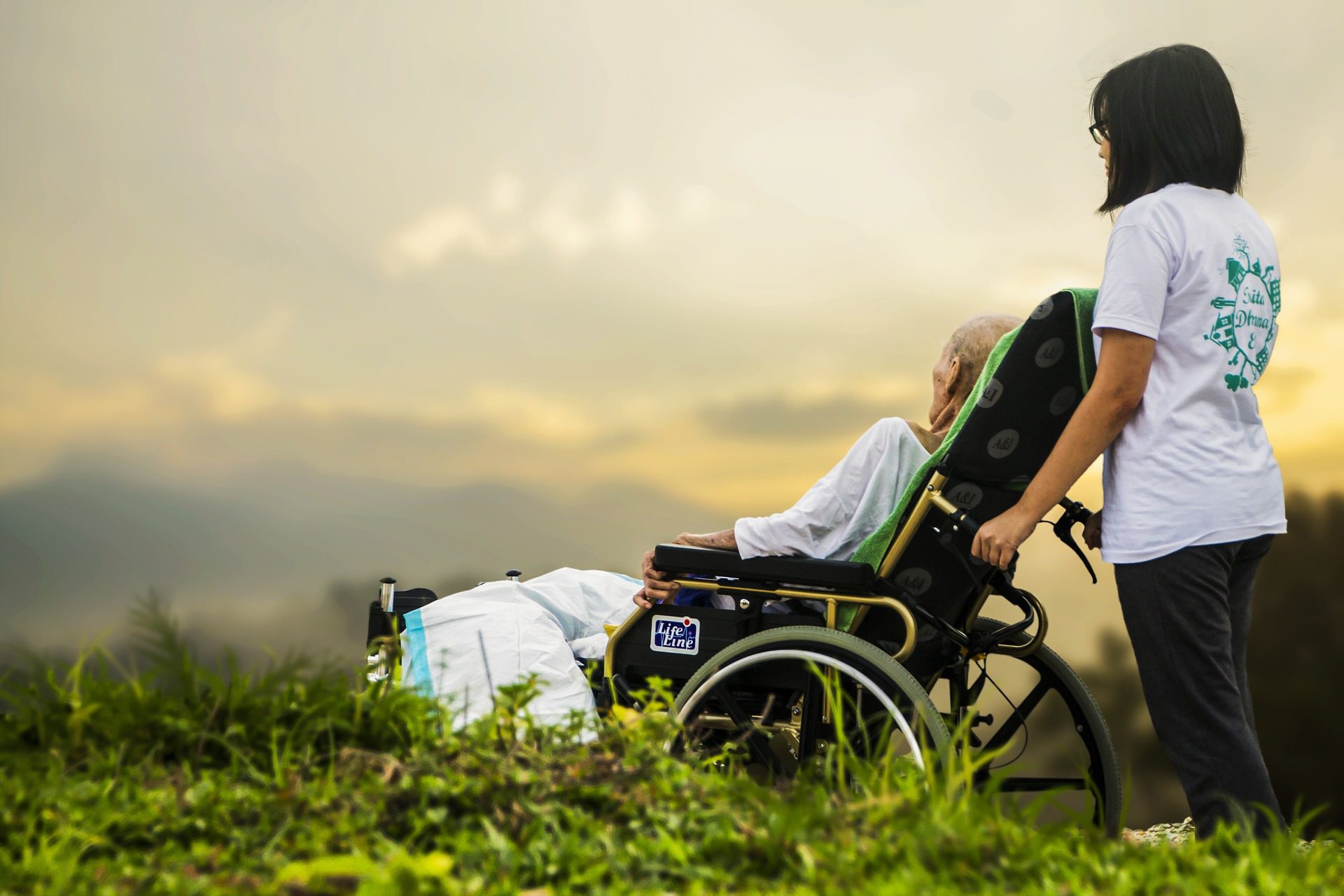
What End-of-Life Care Taught Me About Medicine Beyond Medication
By Jonathan X. Wang, ’19, MS ’19
I remember how Frank loved jazz. How he smiled whenever I mentioned his wife or his three daughters. The stain on the corner of his checkered shirt, the slight bulge in his belly, the tan khakis he always wore.

But I also remember how frail his aging hands were. How Alzheimer’s took his ability to remember his favorite song. How his face would fall at the end of our weekly visits. I remember his last whisper to me that echoes in my head months after his death.
Frank, like my other hospice patients, taught me that medicine isn’t only about life expectancies, surgeries, or prescriptions. It’s about Nate, a teen with HIV whose main concern is whether he’ll ever make friends at school; or Jacob, who wants to spend his remaining days with his three daughters, not at a clinic taking a barrage of medical tests.
I first started volunteering in hospice the summer before coming to Stanford, with some encouragement from my older sister and a book I read, The Empathy Exams by Leslie Jamison. The patients I met showed me the value of care beyond data and diagnosis, beyond literature and calculations. I have seen a patient’s eyes light up over a conversation about their poetry collection, their wife, their three kids. I’ve also sat with patients as they came to a peaceful end or violently struggled to keep their autonomy. These experiences have taught me that empathy can be like a clinical skill—we strengthen it when we go beyond routine pleasantries, and we treat with it by listening with intent and bringing difficulties to light.
Frank’s diagnosis of Alzheimer’s meant that during our time together, he lost memories of who he was. It meant he was going to forget our visits. He was going to forget my name. I know many of these stories are sad, and some did not have happy endings. But these stories inform my resolve to make sure that in the future we find ways to change the ending for people like Frank.
Inspired by my experiences in hospice, I reached out to Dr. VJ Periyakoil, the director of Palliative Care Training at Stanford Hospital. Under her guidance, Anthony Milki, ’18; Yong-hun Kim, ’19; and I established an organization in 2016 that works closely with the elderly community to engage students in compassionate care and spread awareness of the challenges facing our growing elderly population: Stanford Undergraduate Hospice and Palliative Care (SUHPaC).
Through SUHPaC, I have seen how working with patients at the end of their lives fosters love and respect for others. I have witnessed the transformation of our members into caregivers as they discover that medicine is more than just a pill. Founding the organization is the thing I am proudest to have done at Stanford. Someday, I hope to shake the hands of a hospice patient, not as a young man unsure of his future, but as a confident, learned, and caring individual in a white coat, extending a hand to help.
Jon Wang, ’19, is a computational biology major and coterminal master’s student in biomedical informatics. He is a member of the Public Service Honor Society, a year-long cohort of seniors that provides students the opportunity to reflect on their public service and develop their civic leadership identities. At Stanford, Jon has been involved in Stanford Emergency Medical Services, Golden Gate Science Olympiad, AI and Cancer Biology Research, and Stanford Health Innovation. He is from Roseville, Minnesota.
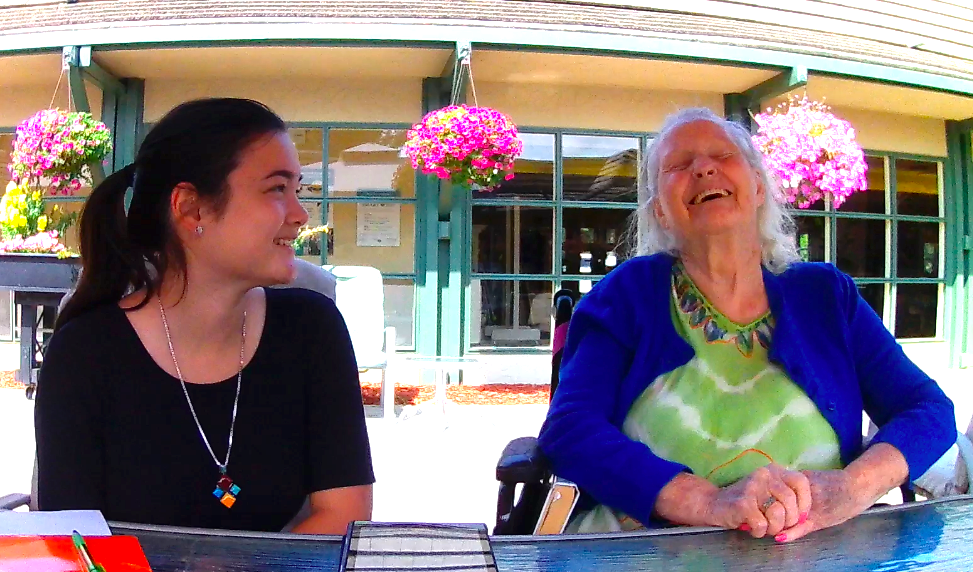
Music, Laughter, and Joy: A Summer of Therapeutic Music in Senior Living Communities
By Samantha Starkey, ’19
Research shows that singing has beneficial effects on the mood, cognition, and health of older adults. These findings are the basis of my placement organization last summer, SingFit, a Los Angeles-based startup that uses technology to make therapeutic music more widely accessible for older adults. During my time interning with SingFit, I saw how one-on-one and group therapeutic music sessions in senior living communities enhance the well-being and social engagement of older adults.
At one of my group sessions at a memory care facility, there was a gentleman who at first seemed confused and disgruntled.
“I can’t sing. I don’t know the words. I can’t even hear properly,” he complained.
As time went on, he began singing along with the group, and he would suggest songs from musicals like West Side Story, once gracing us with a brief rendition of “Maria” in a mellifluous tenor voice.
One day, we sang the Andrews Sisters song, “Beer Barrel Polka.” Most songs have associated dance moves to encourage movement, and we all repeated the “Beer Barrel Polka” move throughout the song: pretending to drink a mug of beer. Afterward, with a deadpan face, he looked at me and mock-sternly cried, “You’re over your limit!” The whole group giggled.
That gentleman was just one of the many people who had a profound impact on me this summer. Working with him made me realize that patience, respect, and music can bring out talents, humor, and joy in people.
Sam Starkey is a senior studying human biology and education. Samantha served as a Roland Longevity Fellow with SingFit. At Stanford, she has been involved in several Cardinal Commitment student organizations, including Side by Side, The Bridge, and Ravenswood Reads. She is from Vancouver, Canada.
